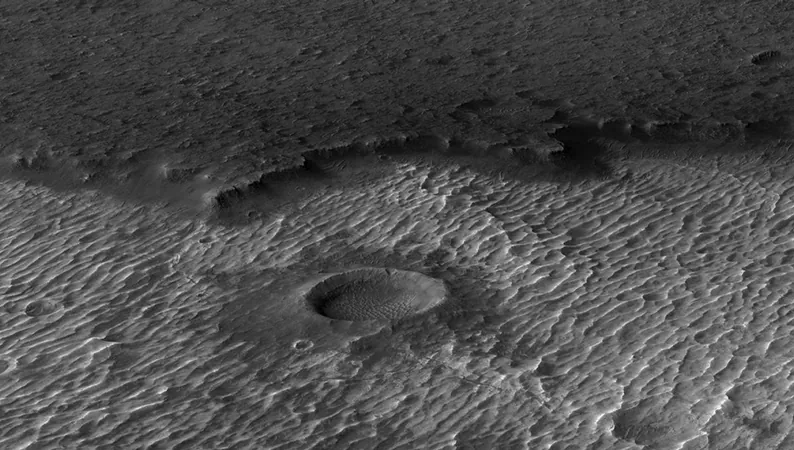
Unveiling Mars' Ancient Climate: Fossils of a Lost World Discovered
2024-09-26
Author: Rajesh
Recent studies have revealed that Mars, once a vibrant planet, boasted flowing rivers, abundant ice, and a thick atmosphere – conditions that starkly contrast with its current barren state. This monumental transformation has sparked the interest of planetary scientists who are piecing together the remnants of Mars’ climate through the analysis of fossilized landscapes known as paleo-bedforms.
After more than a decade of dedicated research, scientists have executed a comprehensive global survey of these paleogeographic features, which serve as vital clues to Mars' ancient weather systems. Utilizing the powerful HiRISE camera onboard NASA's Mars Reconnaissance Orbiter, the team uncovered diverse formations that illustrate the planet's dramatic climate history, influenced by both wind and water.
Among the most significant findings are paleo-dunes and megaripples, shaped by relentless Martian winds, as well as fluvial paleo-dunes formed by flowing water. The researchers have also identified unique geological features such as dune cast pits— evidence of ancient dunes now worn down to mere depressions in the landscape.
Lead author Matthew Chojnacki from the Planetary Science Institute commented on the spectacular clarity of these findings: “The most compelling and unambiguous paleo-bedforms were the dunes. A lot of these paleo-dunes are dead ringers for the modern dunes; they just look more decrepit.”
The process of fossilization in this context is a fascinating one. Wind shapes the Martian sand, and as it settles, the particles gradually harden into rock. This process can be accelerated if the sand is buried under layers of lava or volcanic ash. Interestingly, evidence of fluvial bedforms is tied to the once-mighty megafloods that reshaped the Martian surface, revealing a complex interplay between water and land that was previously surprising to researchers.
Chojnacki notes, “Mars has an abundance of dry river channels where more fluvial bedforms may have formed, but it appears their small size and channel infilling were not conducive for their preservation.”
Most paleo-bedforms identified date back approximately 2 billion years, with some more recently formed. These structures are distributed widely across the Martian surface, particularly in well-known areas like Valles Marineris, Noctis Labyrinthus, and Hellas Planitia.
Chojnacki emphasizes the importance of this research: “While many bedforms on Mars are active and migrating today, other fields are static and show evidence for some sort of stabilization process that may eventually lead to lithification. Understanding this continuum will hopefully allow us to better understand the changing climatic conditions of the red planet.”
This exciting exploration into Mars’ past not only provides insight into the planet's geological history but might also spark renewed interest in future exploration missions. As scientists continue to decode the rich tapestry of Mars' climate history, we are left to ponder whether there were ever forms of life on this stunning planet and what other secrets it may hide waiting to be discovered.

 Brasil (PT)
Brasil (PT)
 Canada (EN)
Canada (EN)
 Chile (ES)
Chile (ES)
 Česko (CS)
Česko (CS)
 대한민국 (KO)
대한민국 (KO)
 España (ES)
España (ES)
 France (FR)
France (FR)
 Hong Kong (EN)
Hong Kong (EN)
 Italia (IT)
Italia (IT)
 日本 (JA)
日本 (JA)
 Magyarország (HU)
Magyarország (HU)
 Norge (NO)
Norge (NO)
 Polska (PL)
Polska (PL)
 Schweiz (DE)
Schweiz (DE)
 Singapore (EN)
Singapore (EN)
 Sverige (SV)
Sverige (SV)
 Suomi (FI)
Suomi (FI)
 Türkiye (TR)
Türkiye (TR)
 الإمارات العربية المتحدة (AR)
الإمارات العربية المتحدة (AR)